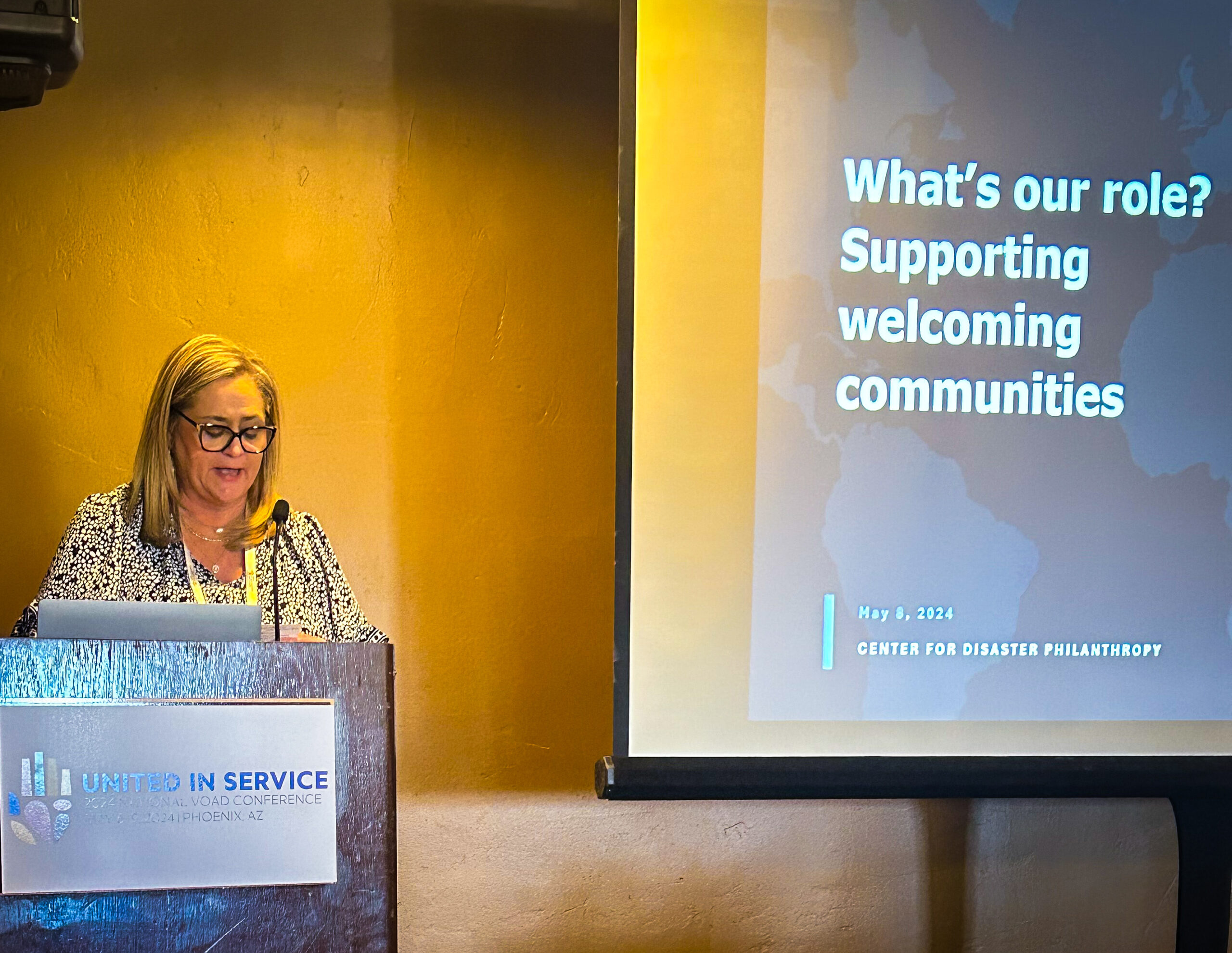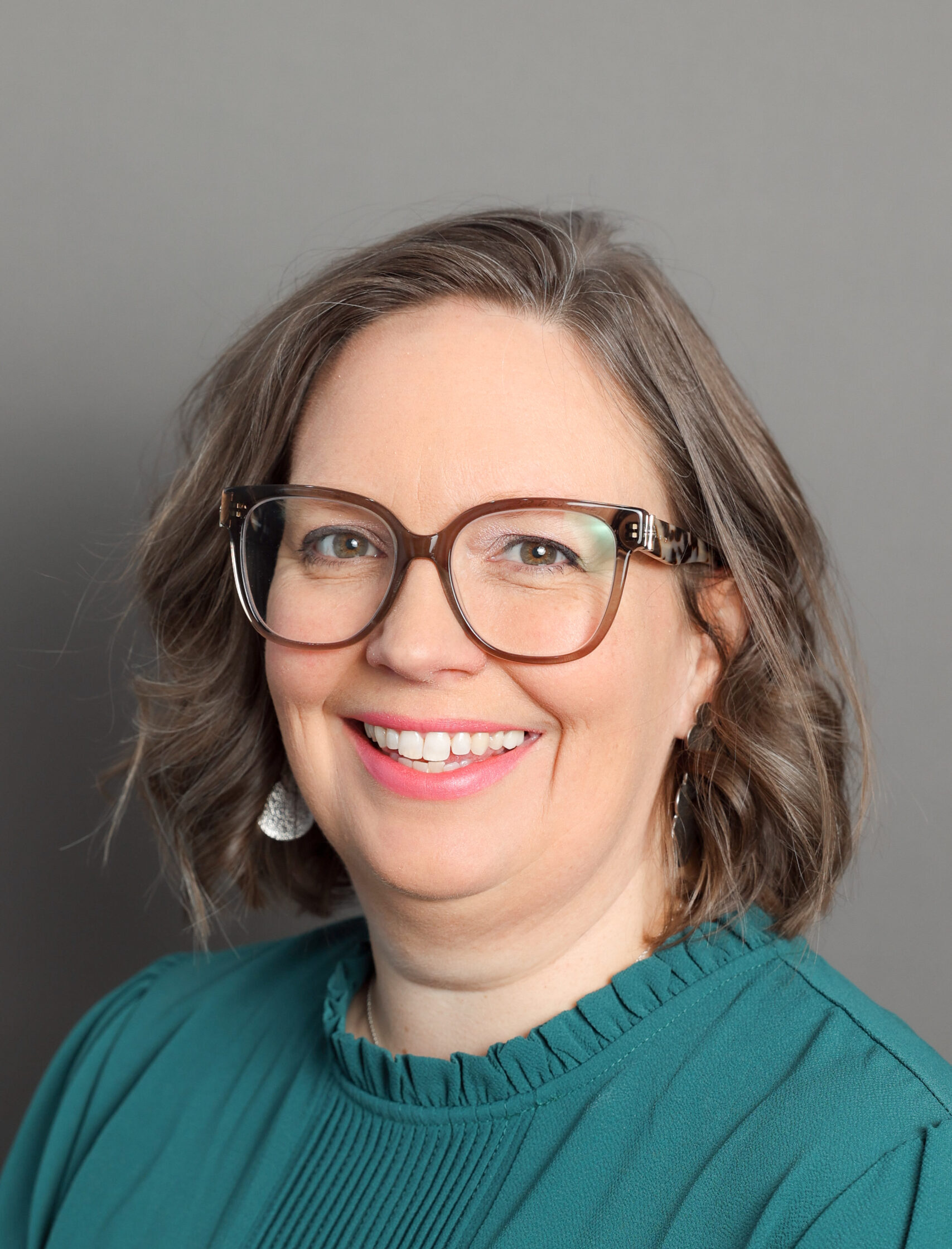What’s our role in supporting welcoming communities? Reflections from a National VOAD Conference discussion

How can organizations best support communities as they see an influx of immigrants, refugees and asylum-seekers due to the crisis created by ineffective local, state and federal policies at U.S. borders?
This complex humanitarian emergency has moved beyond border states and is affecting communities across the U.S., stretching organizations and local governments beyond capacity and to the breaking point. Disaster response and recovery organizations have experience in helping communities prepare for, respond to and recover from disasters. Should we use this expertise to help these individuals and families feel welcome and safe while helping ensure the communities where they settle are supported as well?
The Center for Disaster Philanthropy’s domestic funds team – Juanicia Crump, Cari Cullen, Laura Grantham and Sally Ray – recently attended the National Voluntary Organizations Active in Disasters (NVOAD) Conference in Phoenix, Arizona. At the conference, Sally and Cari facilitated and served on a panel discussion about the role of disaster response and recovery organizations in supporting locations like Denver, New York City, Chicago, Washington, D.C. and other cities experiencing an influx of immigrants.
A panel of experts from direct service providers, government agencies and funding organizations with front-line experience in addressing the needs of these places and these new residents represented rural, suburban and urban communities and discussed how we can use disaster response expertise to support communities in welcoming an unexpected influx of immigrants.
Who should engage?
Noting that NVOAD recently formed a committee to specifically address this topic, the Migrant, Displacement and Refugee Committee, and that CDP has provided funding support in this humanitarian space since 2020, the audience members from organizations across the U.S. were asked to share where they stand on these efforts.
The majority of the organizations in the room indicated that participation in receiving, sheltering or resourcing migrants and immigrants was part of their mission and that they were engaged in efforts at the border or in interior communities. These organizations historically have refugee resettlement services embedded alongside disaster response and recovery work or have pivoted to include complex humanitarian emergencies in their thinking.
However, several organizations indicated that they, as disaster response and recovery organizations, were engaged even though they saw it outside of their core mission, expressing the perceived and real political and social risks of stepping into these spaces.
Throughout the session, an underlying understanding emerged that many organizations believe they have a role and are utilizing their experience and expertise in the post-disaster context as well as their organization’s rich histories welcoming refugees into communities. But they also made it clear that the current need was not the same as supporting refugee resettlement, and required adaptation, new partners, more complex resources and service systems, and a different type of coordination and commitment.
Although the border crisis and the busing of asylum seekers to inland cities is not an officially declared disaster, the Biden Administration has asked FEMA to support local communities receiving bused asylum-seekers. The level of support that is provided varies by FEMA region, but FEMA officials are primarily acting as coordinators and connecting needs to resources.
Some local and national funders have supported response and recovery efforts in locations across the U.S., but heard from others that knowing who to fund and what the needs are is not always clear. Coordination is not consistent from city to city, town to town or even state to state.
Mission driven
How does responding to this emergency fit into the missions of disaster-related organizations? The organizations represented in the discussion at the NVOAD conference believe we can and should work collaboratively with local communities to safely welcome new populations and best address their needs.
Sharing data and information on the effects of the border crisis on communities and the local, state and federal responses to the crisis – where there is a response – made it clear that there is much work to be done. As experts in sheltering, feeding, case management and so much more, we clearly see a connection between the work our organizations do daily, and the work required to meet the needs of newly arriving residents.
However, there are ongoing concerns that the politicization of this emergency might result in a loss of support from organizational stakeholders. And, of course, resources and capacity are lacking. We at CDP believe philanthropy can and must help, especially since there’s a lack of consistent federal funding for any of these welcoming spaces. These communities often don’t have the capacity to do what needs to be done on their own.
Philanthropy’s role
At CDP, our mission and our values drive us to support an equity-focused community response and recovery. We have designated the crisis at the U.S. southern border as a complex humanitarian emergency and are supporting it through our Disaster Recovery Fund. Our hope is to mobilize philanthropic support for the communities affected by this emergency. Here’s how funders can engage:
- Learn more about the southern border crisis and its impact on communities along the border and across the United States.
- Check in with existing partners and learn about their engagement in this work. If possible, increase the support you provide to allow them the flexibility to address community needs. Or simply allow them to use existing funding in a flexible manner to address these needs.
- Advocate for these communities and the humanitarian needs of the people affected by sharing what you’ve learned and what you’re doing to help.
- For place-based funders in locations that are not proximate to the current needs, consider how you are making your community more welcoming, working to reduce vulnerabilities, and elevating conversations about how future climate and economic migration may impact your community.
If you have questions about how best to support communities and the individuals and families seeking a safer place to live, please reach out to us. We’re happy to help.

